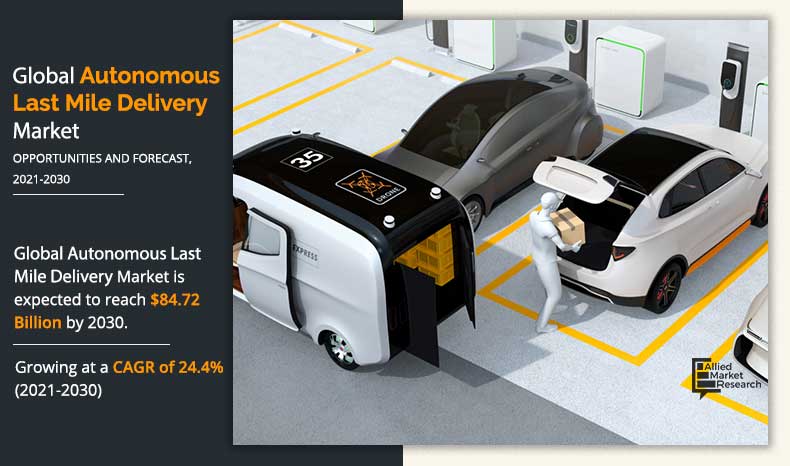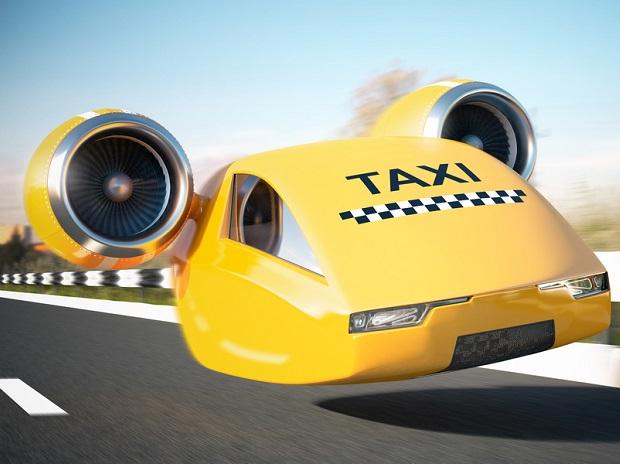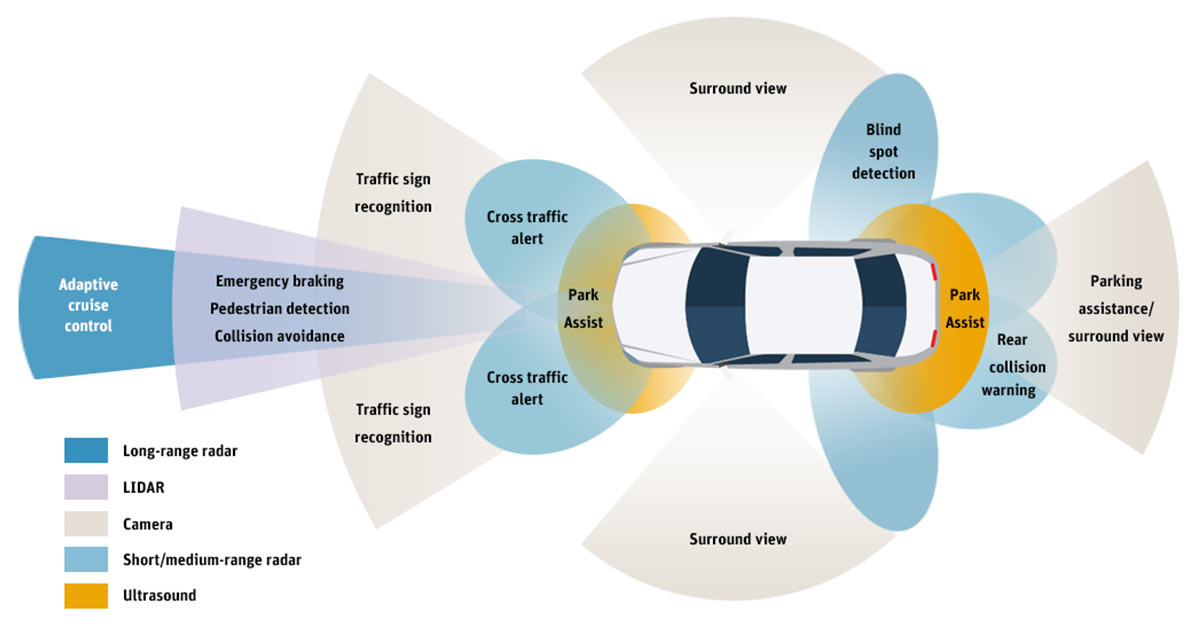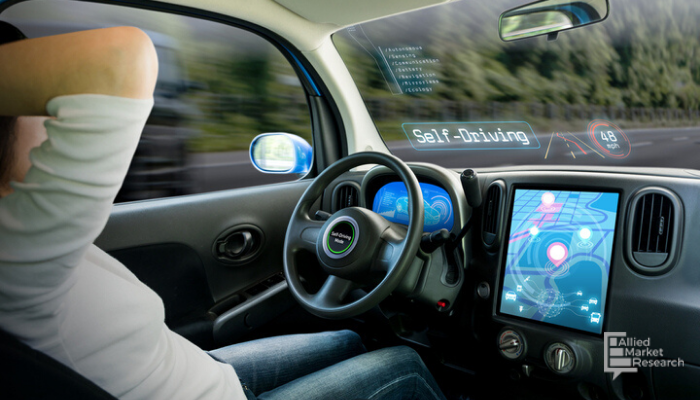The automotive industry encompasses all those companies and activities that are involved in the production of motor vehicles, including components such as engines and bodies, but excluding batteries, tires, and fuel. Light trucks, including pickups, vans, and sport utility vehicles are the main products of the automotive industry. The automotive industry contributes to several important dimensions of a nation such as generating revenue, creating economic development, and promoting R&D & innovation. The U.S. has one of the largest automotive markets across the globe. According to Select USA, in 2018, the U.S. sales of light vehicles reached 17.2 million units.
The world witnessed rapid spread of coronavirus disease in the early months of 2020. To limit the spread of the virus, nations across the world imposed partial and complete lockdowns, thus shutting factories producing all kind of products, except the essential ones. The unprecedented outbreak of COVID-19 didn’t give the industries and companies time to plan or protect themselves from any losses. COVID-19 has severely affected all the industries on a global scale, including the automotive industry that is already coping with a decline in global demand.
Post 2020 and with normalization post COVID-19, top strategic trends or new technological trends for 2021 are disruptive technologies such as Autonomous Vehicles, Maglev Trains, Autonomous Last Mile Delivery, Additive Manufacturing, Micro-mobility, Solar-powered Cars, Flying Taxis, Hoverbikes, Predictive Vehicle Technology, and Cars-as-a-Service.
Autonomous Vehicles: The Ability to Control itself without any Human Intervention
 Autonomous vehicles are anticipated to completely transform the way we commute on roads. An autonomous vehicle or self-driving vehicle is one that has the ability to control itself and execute the required functions without any human intervention. An autonomous vehicle does all this through its ability to analyze its surroundings using sensors, actuators, machine learning systems, powerful processors, and complex algorithms.
Autonomous vehicles are anticipated to completely transform the way we commute on roads. An autonomous vehicle or self-driving vehicle is one that has the ability to control itself and execute the required functions without any human intervention. An autonomous vehicle does all this through its ability to analyze its surroundings using sensors, actuators, machine learning systems, powerful processors, and complex algorithms.
Some of the major players involved in the development of autonomous vehicles are Waymo, Cruise, Tesla, Argo AI, Aurora, and Aptiv. With robust financial assistance regarding continuous R&D and product innovations, these players are most likely to launch consumer-ready autonomous vehicles in the next 10 years. Recently, in March 2020, Waymo raised $2.25 billion to push its autonomous vehicle operations. Moreover, Cruise raised $ 1.15 billion in 2019. Currently, several companies are testing their systems and vehicles. However, COVID-19 pandemic brought interruptions in the continuous development of autonomous vehicles. The disruption in supply chains and restrictions in the movement of people & goods resulted in partial or complete stoppage of the research/testing activities across the world. Post pandemic, the autonomous vehicles segment is much anticipated to bounce back and reset to its ongoing activities.
Maglev Trains: The Demand for Faster Transport Systems across the World
 Maglev (magnetic levitation) trains make use of electromagnets for their levitation and also generate the push that moves the train at high speeds. In comparison with conventional trains, maglev trains have superior controls as their acceleration and braking systems aren’t based on the friction of the railway track. Maglev trains incur huge costs, and there are just 3 commercial operational Maglev systems in the world (Japan, China, and South Korea). The speed record for the fastest Maglev train is the Shanghai Maglev with maximum speed of 431 km/hr, which covers 30.5 km distance in around 7 minutes. Japan and China are upgrading their Maglev technologies and developing & testing even higher speed Maglev trains (above 600km/hr).
Maglev (magnetic levitation) trains make use of electromagnets for their levitation and also generate the push that moves the train at high speeds. In comparison with conventional trains, maglev trains have superior controls as their acceleration and braking systems aren’t based on the friction of the railway track. Maglev trains incur huge costs, and there are just 3 commercial operational Maglev systems in the world (Japan, China, and South Korea). The speed record for the fastest Maglev train is the Shanghai Maglev with maximum speed of 431 km/hr, which covers 30.5 km distance in around 7 minutes. Japan and China are upgrading their Maglev technologies and developing & testing even higher speed Maglev trains (above 600km/hr).
The demand for faster transport systems is rising in several nations across the world. Recently, in September 2020, BHEL signed an MOU with SwissRapide AG to develop Maglev trains systems in India. SwissRapide AG holds an exceptional position of providing Transrapid Maglev technology, which is the only commercially viable ultra-high-speed Maglev Rail system in the world. However, the COVID-19 pandemic created adverse economic conditions across the world. Several governments are pouring in huge investments to aid the healthcare systems and reducing investments in other segments. With coronavirus vaccination on the horizon, disruptions in supply chains and restricted movement of goods & people are expected to resume over the next months while the initiatives for driving the developments of Maglev trains will resume soon.
Autonomous Last Mile Delivery: Self-Driving Vehicles to Supplement the Need for Contactless Last Mile Delivery Services
 Online retail sales are expected to register tremendous growth while the e-commerce sector is projected to record 15% of the total retail sales in 2020. During the pandemic, online sales of existing players are expected to register 10% to 15% growth in Europe, followed by 35% growth in China in 2020. Similarly, companies, such as DHL, have made investments toward self-driving vehicles to supplement the need for contactless last mile delivery services. In addition, Walmart registered a positive growth in its online sales business during the COVID-19 period as compared to previous years. Furthermore, the Netherlands-based food giant company Ahold-Delhaize is looking to grow its business from $3.17 billion to $5.6 billion in 2020 by offering its services through autonomous last mile delivery method.
Online retail sales are expected to register tremendous growth while the e-commerce sector is projected to record 15% of the total retail sales in 2020. During the pandemic, online sales of existing players are expected to register 10% to 15% growth in Europe, followed by 35% growth in China in 2020. Similarly, companies, such as DHL, have made investments toward self-driving vehicles to supplement the need for contactless last mile delivery services. In addition, Walmart registered a positive growth in its online sales business during the COVID-19 period as compared to previous years. Furthermore, the Netherlands-based food giant company Ahold-Delhaize is looking to grow its business from $3.17 billion to $5.6 billion in 2020 by offering its services through autonomous last mile delivery method.
During the beginning of COVID-19 pandemic, JD.com, a Beijing-based e-commerce company deployed autonomous shuttles and drones to deliver healthcare and commercial goods in different quarantine zones across Hubei, China. Such types of developments and the introduction of autonomous vehicles supporting last mile delivery have led to the growth of the market.
With the breakthrough in vaccination and when the situation is under control, last mile delivery will certainly not look the same as the companies are preparing for innovation shift after the restrictions are lifted to rapidly assess and adapt their supply chains. For instance, an Orlando-based final mile delivery orchestration and fulfillment platform, OneRail, launched a new service known as “QuickStart” to help retailers to curb the immediate final mile delivery capacity to support the e-commerce demand spike caused by COVID-19. Attributed to this platform, OneRail has registered a 700% growth in parcel deliveries by volume during the last weeks of March. Such types of innovations have also enabled the key players in the autonomous last mile delivery industry to come up with different techniques to increase their business during and after the pandemic.
Additive Manufacturing: Producing Components with Complex Geometric Designs
 Additive manufacturing (AM), commonly known as 3D printing is an innovative approach to industrial production that facilitates the manufacture of stronger, lighter components & systems. Additive manufacturing makes use of computer-aided-design (CAD) software or 3D body scanners to command hardware to deposit layer upon layer material, in particular geometric profiles. In contrast to the traditional manufacturing processes, which involve removing material through machining, milling, shaping, carving, or other means, additive manufacturing adds the material to create an object. It outclasses all other manufacturing processes in producing components with complex geometric designs. It is widely being used in creating aerospace parts, automotive components, and 3D printed clinical implants for patients & other industries. The major players operating in the additive manufacturing field are 3D Systems, Inc., Stratasys Ltd., ExOne, EnvisionTEC, Materialise NV, and MCor Technologies Ltd. Companies are following the strategies of product launch and partnership to excel in the market. For instance, in May 2020, Braskem, one of the largest polyolefins producers in the U.S. launched an additive manufacturing product portfolio. Similarly, XponentialWorks launched new generative and additive products in partnership with its portfolio companies at Formnext 2019. Furthermore, in 2019, industrial additive manufacturing solutions specialist Essentium entered into a partnership with GoPrint3D, a printing equipment supplier.
Additive manufacturing (AM), commonly known as 3D printing is an innovative approach to industrial production that facilitates the manufacture of stronger, lighter components & systems. Additive manufacturing makes use of computer-aided-design (CAD) software or 3D body scanners to command hardware to deposit layer upon layer material, in particular geometric profiles. In contrast to the traditional manufacturing processes, which involve removing material through machining, milling, shaping, carving, or other means, additive manufacturing adds the material to create an object. It outclasses all other manufacturing processes in producing components with complex geometric designs. It is widely being used in creating aerospace parts, automotive components, and 3D printed clinical implants for patients & other industries. The major players operating in the additive manufacturing field are 3D Systems, Inc., Stratasys Ltd., ExOne, EnvisionTEC, Materialise NV, and MCor Technologies Ltd. Companies are following the strategies of product launch and partnership to excel in the market. For instance, in May 2020, Braskem, one of the largest polyolefins producers in the U.S. launched an additive manufacturing product portfolio. Similarly, XponentialWorks launched new generative and additive products in partnership with its portfolio companies at Formnext 2019. Furthermore, in 2019, industrial additive manufacturing solutions specialist Essentium entered into a partnership with GoPrint3D, a printing equipment supplier.
The potential applications of additive manufacturing are being acknowledged across a number of different industry verticals. In developed nations, where conventional manufacturing has observed a huge decline, the advances in additive manufacturing offer valuable prospects for growth. Pre-COVID-19 developments and adoption for 3D-printing were aimed at large-scale implementation of 3D-printing manufactured goods. The pandemic caused widespread supply chain disruption and lead to the delay in the progress related to additive manufacturing. The post-pandemic period is expected to give a push to the developments related with the additive manufacturing market.
Micro-mobility: Offering Urban Transportation
 Micro-mobility is a class of light-weight transportation automobiles that are designed for personal use. Vendors active in the micro-mobility market space are focusing on offering urban transportation that weighs less than 500kg. Electronic scooters, e-bikes, and electric skateboards are some of the examples of micro-mobility technologies, which have gained immense popularity in recent years. Micro-mobility becomes quite practical in metropolitan cities on account of the rising demand for a practical solution for short-range transportation (less than 8km). Micro-mobility transportation offers a convenient mode of travel in crowded cities. In addition, the easy availability of micro-mobility transportation via shared mobility applications renders them more user-friendly as the lightweight vehicles do not require the user to be licensed or insured.
Micro-mobility is a class of light-weight transportation automobiles that are designed for personal use. Vendors active in the micro-mobility market space are focusing on offering urban transportation that weighs less than 500kg. Electronic scooters, e-bikes, and electric skateboards are some of the examples of micro-mobility technologies, which have gained immense popularity in recent years. Micro-mobility becomes quite practical in metropolitan cities on account of the rising demand for a practical solution for short-range transportation (less than 8km). Micro-mobility transportation offers a convenient mode of travel in crowded cities. In addition, the easy availability of micro-mobility transportation via shared mobility applications renders them more user-friendly as the lightweight vehicles do not require the user to be licensed or insured.
Big tech companies, such as Google, Microsoft, Apple, and Amazon, are focusing on the opportunity that the new micro-mobility transportation offers by creating the software and cloud services required to facilitate the personal and shared micro-mobility start-ups. For instance, Uber is aiming to launch a micro-transport service and is testing the inclusion of autonomous scooters and e-bikes to supplement its driving services. Other vendors that are active in the market include Grow Mobility, Bird, Lyft, Lime Micro mobility, and Hellobike.
The COVID-19 pandemic has affected millions of people across the world, plunged the global economy into crisis, and bankrupted businesses on a large scale. In the times of new normal, work from home, canceling trips, and even limiting the outings to grocery stores and restaurants, the micro-mobility businesses are witnessing huge decline in the ridership and consequently, their revenues. With the initiation of vaccination across the globe, the pandemic is anticipated to be restrained over the year/s and the upward, pre-pandemic trend for the adoption of micro-mobility transportation is predicted to grow considerably.
Solar-powered Cars: Major Breakthrough in the Automotive Sector
 Solar cars are battery-powered cars that use solar power as their energy source. A solar car makes use of photovoltaic cells to convert solar energy into electricity. These cars can store some amount of solar energy using batteries and can also run smoothly at night. Solar-powered cars can be a major breakthrough in the automotive sector that will be carbon-neutral and an energy-efficient solution. With a growing interest in sustainable and renewable energy sources, solar-powered cars have gained quite popularity. Several automobile players are working toward developing viable solar cars, for example, Squad Mobility, Light Year, Hyundai, Sono Motors, Toyota, Aptera, and Tesla. Recently, in December 2020, the U.S. startup Aptera unveiled a three-wheeled solar-electric car that can offer a range of up to 1,000 miles on full battery. Moreover, Toyota has signed a partnership with Sharp and NEDO to manufacture a unique solar car. Many solar-powered car models are being tested at the moment. Moreover, various automobile vendors are already building solar car kits. These kits can help cars travel longer distances using solar energy.
Solar cars are battery-powered cars that use solar power as their energy source. A solar car makes use of photovoltaic cells to convert solar energy into electricity. These cars can store some amount of solar energy using batteries and can also run smoothly at night. Solar-powered cars can be a major breakthrough in the automotive sector that will be carbon-neutral and an energy-efficient solution. With a growing interest in sustainable and renewable energy sources, solar-powered cars have gained quite popularity. Several automobile players are working toward developing viable solar cars, for example, Squad Mobility, Light Year, Hyundai, Sono Motors, Toyota, Aptera, and Tesla. Recently, in December 2020, the U.S. startup Aptera unveiled a three-wheeled solar-electric car that can offer a range of up to 1,000 miles on full battery. Moreover, Toyota has signed a partnership with Sharp and NEDO to manufacture a unique solar car. Many solar-powered car models are being tested at the moment. Moreover, various automobile vendors are already building solar car kits. These kits can help cars travel longer distances using solar energy.
The automotive industry has faced adverse impacts, owing to border closures, local lockdowns, and the consequent disruption in supply chains. China and India are the major hubs for the manufacturing of automotive parts across the world, but the pandemic led to severe obstacles in the supply of parts. The restrictions in movement of people and materials hampered the industry and led to reduced demand for automobiles. Delays in shipments are being observed across the world. This is impacting solar car production. Cost-effective mechanical and electronic components that are used in making solar-powered cars are majorly made in Asia, and the adverse pandemic conditions have resulted in the delay of shipments. The post-COVID-19 scenario will give an impetus for the growth of the market, owing to the rising demand for zero-emission, energy-efficient automobiles globally.
Flying Taxis: Short Flights on Demand
 An air taxi is a small-sized commercial aircraft that makes short flights on demand. Flying taxi is expected to be a third dimension in the urban transportation matrix. Attributed to the rapidly increasing urbanization across the globe, the rising demand for quicker modes of transportation is anticipated to be one of the major factors attributing to the fast growth of the market. For journeys more than 20 kilometers, flying taxi can emerge as an attractive substitute to a conventional taxi as it can avoid crowded roadways. Big funding rounds are being carried out by the key market players to make superior battery technologies that can be fitted into an air taxi. This is expected to result in the rise in the distance that the flying taxi can achieve in a single charge.
An air taxi is a small-sized commercial aircraft that makes short flights on demand. Flying taxi is expected to be a third dimension in the urban transportation matrix. Attributed to the rapidly increasing urbanization across the globe, the rising demand for quicker modes of transportation is anticipated to be one of the major factors attributing to the fast growth of the market. For journeys more than 20 kilometers, flying taxi can emerge as an attractive substitute to a conventional taxi as it can avoid crowded roadways. Big funding rounds are being carried out by the key market players to make superior battery technologies that can be fitted into an air taxi. This is expected to result in the rise in the distance that the flying taxi can achieve in a single charge.
Companies are investing huge amounts to capitalize on the rising demand for fast, environment-friendly, and safe transportation through flying taxis. For instance, in January 2020, Toyota invested $394 million in Joby Aviation, which is prototyping a manned fully-electric vertical takeoff and landing (eVTOL) air taxi. In another collaboration deal, Hyundai and Uber showcased a large flying taxi at the Consumer Electronics Show in Las Vegas in 2020. German start-up Lilium Aviation tested a remote-controlled, jet-powered eVTOL in 2019. Stuttgart-based Volocopter, which is backed by giants, such as Daimler, Intel, and Geely, aims for fully-autonomous commercial flights in the next 5 to 10 years. Singapore is ready to bring the first-ever battery-powered air taxi service by 2023, as per the claims by Volocopter GmbH, which is working on the development of the air taxi.
The COVID-19 pandemic resulted in the delay in R&D and other related initiatives in the development of flying taxis worldwide.
Hoverbikes: To Reach Some Highly Inaccessible Areas
 Hoverbikes are bikes that can fly. Scorpion-3 was the first hoverbike launched in 2017. Hoverbikes can be immensely useful in search & rescue, aerial surveys, wildlife & parks, power-line inspection, and military & emergency applications. Dubai Police tested the hoverbike in 2018, and the manufacturer Hoversurf has begun the training of officers to fly the Hoversurf S3 2019. Dubai Police is interested in deploying hoverbikes for increasing the capability of police in controlling crimes.
Hoverbikes are bikes that can fly. Scorpion-3 was the first hoverbike launched in 2017. Hoverbikes can be immensely useful in search & rescue, aerial surveys, wildlife & parks, power-line inspection, and military & emergency applications. Dubai Police tested the hoverbike in 2018, and the manufacturer Hoversurf has begun the training of officers to fly the Hoversurf S3 2019. Dubai Police is interested in deploying hoverbikes for increasing the capability of police in controlling crimes.
Several organizations are investing in huge capital in the development and procurement of hoverbikes. For instance, in 2018, Russia’s state development bank Vnesheconombank invested several billions of dollars in the Hover Surf Company, which is developing flying motorcycles or hoverbikes. In 2019, Tokyo-based A.L.I. Technologies unveiled the prototype of its hoverbike known as Speeder today. The Japanese firm aims to sell flying Speeder by 2022. In 2019, Lazareth unveiled its flying bike LMV 496, which is capable of producing 1,300 horsepower and 10 minutes of flight time.
The launch of hoverbikes in the market in the coming years can offer several advantages. For instance, the hoverbike would be able to reach some highly inaccessible areas for vehicles running on roads and helicopters. It can also be useful for proving supplies in instances of emergency. In addition, a hoverbike could also be used to carry out rescue missions in an effective manner as it will have a very short response time in case of an accident. These factors are driving the growth of the hoverbikes market. However, the COVID-19 pandemic adversely impacted the growth of hovercraft market. It resulted in the delay in R&D and other related initiatives in the development of hoverbikes worldwide.
Predictive Vehicle Technology: The Advent of Machine Learning in the Automotive Industry
 Predictive capabilities are becoming quite prevalent in modern cars, which help in personalizing and enhancing the driving experience. Artificial intelligence (AI) and machine learning (ML) are expected to play an important role in transforming the automotive industry. A rising number of manufacturers are making use of algorithms that use data to automate the method of setting up a vehicle, which includes a car’s infotainment system and its preference for applications. Today, more and more vehicles are incorporating IoT technologies that can easily connect with smartphones and respond to voice commands, thus improving the user interface. Predictive vehicle technology can also be very useful in the form of superior sensors installed in a car that informs the driver/owner of the car that requires the service. Depending on the car’s condition, the technology will be able to notify users of any safety threats linked with a faulty part or component, set up service appointments in real-time, and estimate its performance.
Predictive capabilities are becoming quite prevalent in modern cars, which help in personalizing and enhancing the driving experience. Artificial intelligence (AI) and machine learning (ML) are expected to play an important role in transforming the automotive industry. A rising number of manufacturers are making use of algorithms that use data to automate the method of setting up a vehicle, which includes a car’s infotainment system and its preference for applications. Today, more and more vehicles are incorporating IoT technologies that can easily connect with smartphones and respond to voice commands, thus improving the user interface. Predictive vehicle technology can also be very useful in the form of superior sensors installed in a car that informs the driver/owner of the car that requires the service. Depending on the car’s condition, the technology will be able to notify users of any safety threats linked with a faulty part or component, set up service appointments in real-time, and estimate its performance.
The advent of machine learning in the automotive industry, excessive usage of real-time data for vehicular applications, and the emergence of self-driving cars are anticipated to bolster the growth of the predictive vehicle technology market over the years. The key predictive vehicle technology market players include Bosch, Aptiv, Aisin Seiki, ZF, NXP, and Valeo. In January 2019, Aptiv signed a commercial partnership agreement with Affectiva to deliver software derived from deep learning architecture for enhancing the perception capabilities of the car. However, the COVID-19 pandemic resulted in the delay in R&D, testing, and other initiatives in the development of predictive vehicle technology worldwide.
Cars-as-a-Service (CaaS): Offers Flexibility to Customers
 The Cars-as-a-Service (CaaS) model is gaining huge popularity and is advertised as an enhancement over the existing car-rental model. The current car-leasing model is greatly focused on assets. The agreements bind the customers with cars for very long periods of time. In addition, the lease period established at the commencement of the lease is fixed and any alterations made to the lease result in severe penalties and monetary losses from the customer’s point of view. On the other hand, the CaaS model offers flexibility in the hands of customers. Customers can modify and upgrade their cars as and when they require. Similar to lease agreements, the subscription to a car does not bind the customer for a long timeframe. Customers can opt for cars on a month-to-month basis.
The Cars-as-a-Service (CaaS) model is gaining huge popularity and is advertised as an enhancement over the existing car-rental model. The current car-leasing model is greatly focused on assets. The agreements bind the customers with cars for very long periods of time. In addition, the lease period established at the commencement of the lease is fixed and any alterations made to the lease result in severe penalties and monetary losses from the customer’s point of view. On the other hand, the CaaS model offers flexibility in the hands of customers. Customers can modify and upgrade their cars as and when they require. Similar to lease agreements, the subscription to a car does not bind the customer for a long timeframe. Customers can opt for cars on a month-to-month basis.
CaaS model will basically transform transportation for those people living in cities and those who use public transportation and rideshare services quite often. It has gained wide attention in the automotive sector. Big players, such as Porsche, BMW, and Volvo, are already providing luxury subscription plans, typically in the range of $1,000 to $3,000 on a monthly basis. Although, more reasonable choices are now evolving, for instance, Hertz My Car, launched in June 2019, is meant for the more general motorist. In 2018, the U.S. rideshare company Lyft introduced a subscription option that offers 30 free rides a month.
Furthermore, COVID-19 adversely impacted the CaaS market as the demand for car-rental service slumped to its lowest level, owing to the outbreak of pandemic across the world. However, the model is robust and attractive, and is anticipated to gain momentum in the coming years.
So says a study
The above-mentioned upcoming technologies in the fields of Automotive & Transportation are expected to completely transform the logistics and the way we commute. We at Allied Market Research believe that the adoption of these technologies will allow smarter, safer, and faster travel between both short and long distances over the years.
Author’s Bio - Himanshu Joshi
Himanshu works as a Research Associate at Allied Market Research. He is a seasoned professional and holds experience of about 2+ years in Market Research & Business Consulting, working under the spectrum of Automotive & Transportation and Aerospace & Defense domains. Himanshu conceptualizes and implements a scalable business strategy and provides strategic leadership to the clients. His forte lies in deep research, market analysis, customer assessment, and sustainable market strategy, among others.
Himanshu holds a Bachelor’s degree in Mechanical Engineering from KEC Dwarahat.








Leave a Reply